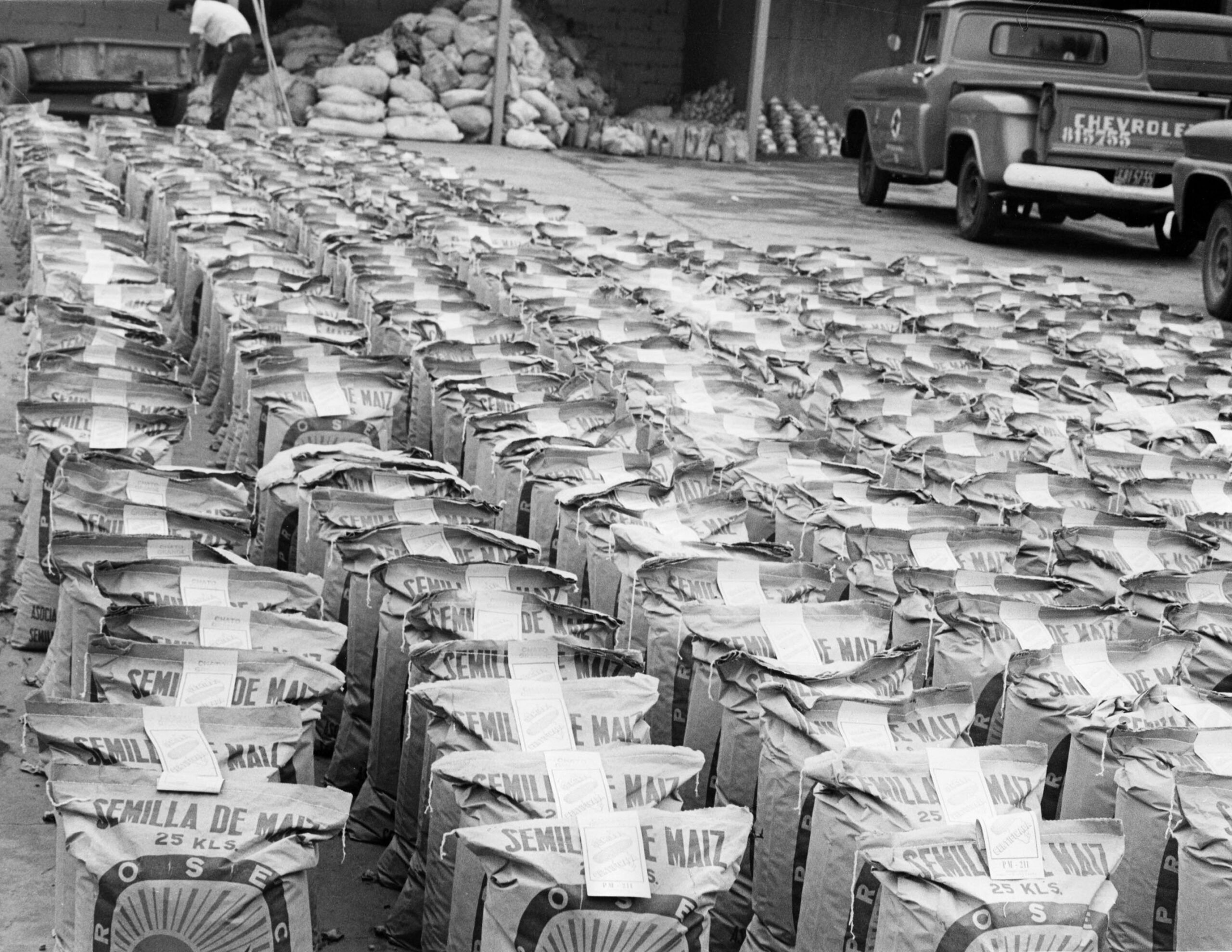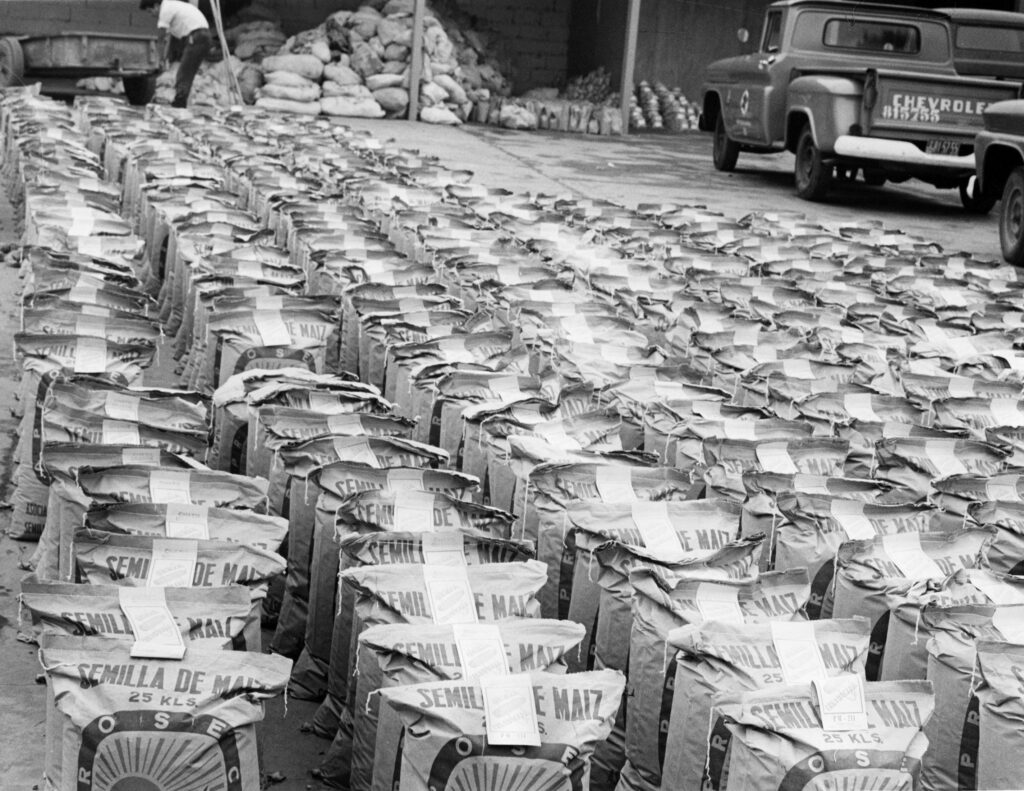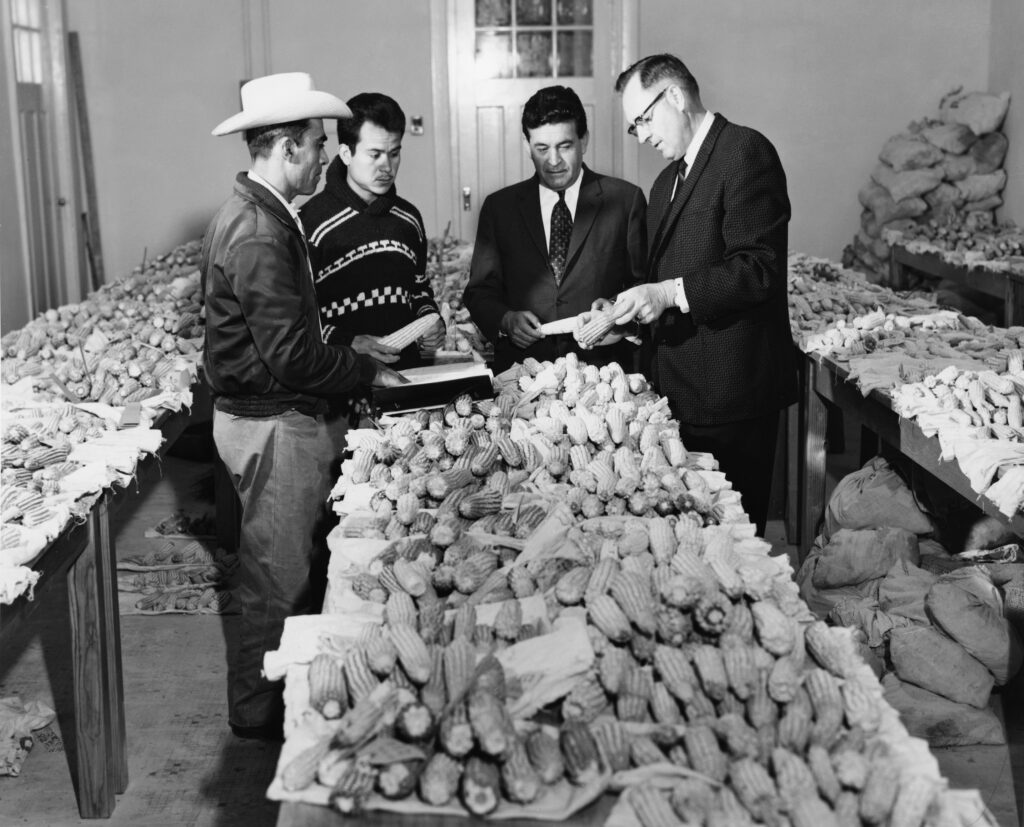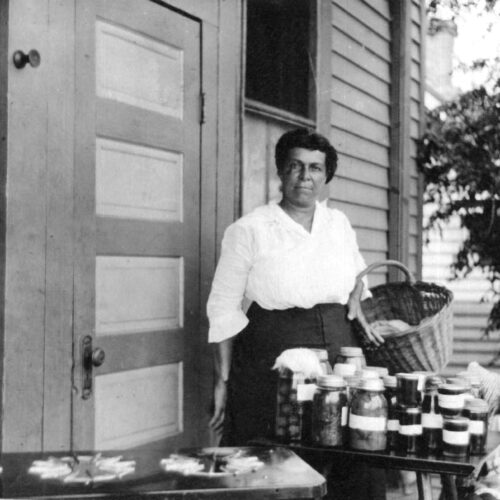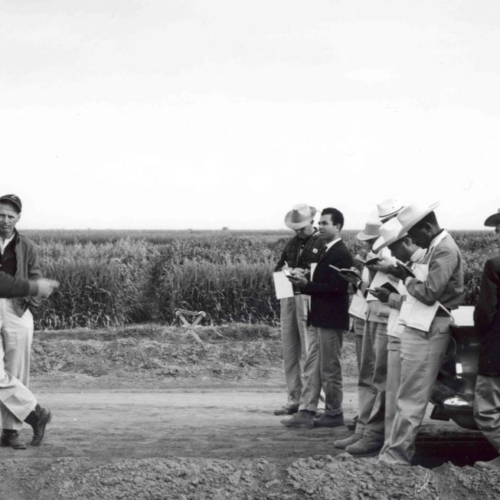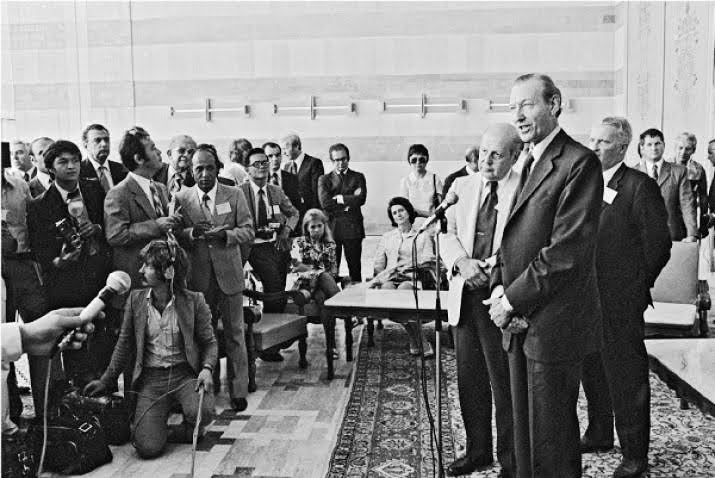The Rockefeller Foundation (RF)’s Mexican Agriculture Program (MAP), which operated from 1943 to 1965, is now credited with launching the global transformation known as the “Green Revolution.” MAP was the RF’s first intensive agricultural endeavor and its first operating program since the International Health Division (IHD). The success of MAP eventually encouraged RF Trustees to discontinue the IHD in order to place agriculture at the center of an expanded model of public health research and promotion.
From the beginning MAP focused on techniques that could be transferred to various regions and climates. Within thirty years MAP’s hybrid seeds and soil improvement methods spread into Latin American and Southeast Asia, changing economies and offering hope for food self-sufficiency in developing nations. MAP provided the basis for the International Maize and Wheat Improvement Center (CIMMYT), which continues similar work today.
Three Scientists in a Station Wagon
IHD Associate Director John A. Ferrell lobbied RF leadership for an agriculture initiative in Mexico throughout the 1930s, but the Foundation’s focus remained elsewhere. By the 1940s, two factors changed this decision. First, the RF was forced to abandon projects in Europe and Asia during World War II, and the Foundation needed to channel its staff and expertise to a new region. Second, Mexican President Manuel Ávila Camacho sought to modernize Mexican farming and boost the economy, making Mexico more open to U.S. aid and inspiring the Roosevelt administration to seek help in building an important wartime alliance.
United States Vice President Henry A. Wallace, an experienced Iowa corn breeder, attended Camacho’s 1940 inauguration and toured surrounding farms. Soon thereafter, he remarked to RF President Raymond Fosdick “if the yield per acre in corn and beans could be increased, it would have a greater effect on the national life of Mexico than anything that could be done.”Raymond B. Fosdick Memorandum, 1941, as quoted in William C. Cobb, “The Historical Backgrounds of the Mexican Agriculture Program,” March, 1956, Rockefeller Archive Center, Library Stacks 323 Agr-16, Part II, p.6. Although Mexico was technically not overpopulated in terms of the ratio of people to land mass, it had many features of overpopulated countries including rampant hunger, poverty, and substandard levels of food production.
The Foundation approached Wallace’s idea with its signature strategy: it dispatched three experts on a reconnaissance survey. In July 1941 agriculture professors Elvin Stakman (University of Minnesota), Paul Mangelsdorf (Harvard University), and Richard Bradfield (Cornell University) embarked on a two-month, 5,000-mile journey in a station wagon. Their trip is now regarded as the founding moment of the “Green Revolution.”
Their subsequent report recommended a Foundation-operated program using a core staff of U.S.-trained specialists with not only agricultural experience but also “a genuine interest in Mexico and real sympathy with its people and problems.”“Summary of Recommendations,” 1941, RAC, RG 1.2, Series 323, Box 10, Folder 63. They advised “starting at the top and expanding downward” over trying to “start at the bottom” with agricultural schools and extension work. In 1941 Mexico had no academics with advanced degrees in agriculture and insufficient indigenous expertise to establish extension programs. So in 1943 the RF signed a formal agreement with the Mexican government, which established a new department, the Office of Special Studies (OSS) to coordinate the program.
J. George Harrar, who later became RF President, began his Foundation career directing this program. Staff members included corn breeder Edwin J. Wellhausen, soil scientist William E. Colwell, potato breeder John Niederhauser, and plant pathologist Norman E. Borlaug, whose contributions to the world food supply eventually won him the 1970 Nobel Peace Prize. Headquartered in Mexico City, MAP conducted field experiments and training programs at the National School of Agriculture in nearby Chapingo, on 150 acres donated by the Mexican government.
Corn Comes First
Although bigger breakthroughs would come in wheat, corn was MAP’s first task because of its centrality to the Mexican diet. Wellhausen collected over 800 Mexican varieties of corn, testing each for its behavior under different conditions including temperature and precipitation, soil composition, and altitude. It was impossible simply to import U.S. corn, as foreign varieties tended to fail in the complex Mexican climate. But Wellhausen made immediate yield improvements simply by distributing the best Mexican varieties to farmers in regions without access to them. He then planted the top varieties next to each other so that natural cross-pollination could occur, ultimately creating two alternating hybrid lots that could again be planted in intercrossing lines, eventually resulting in what agricultural scientists call a double-topcross synthetic. These synthetics outperformed even the top hand-selected varieties and were widely distributed to farmers.
By 1947 ten new varieties were available and MAP officials struggled to distribute these varieties on a large scale. Mexico responded by forming the Corn Commission in 1947. It rented land and used RF-developed seed to create a sizable cache. The name of the first widely distributed seed, “Rocamex,” paid tribute to the RF-Mexico collaboration. By 1948, only 5 years after MAP launched, Mexico was self-sufficient in corn production.
Building Resilient Wheat
It took much longer for Mexico to become self-sufficient in wheat production. However, Borlaug’s innovations would change wheat production worldwide forever. Borlaug began by tackling stem rust, a highly contagious mold-like fungus that breeds on a variety of grasses and transfers to wheat just as it comes to maturity. Stem rust could ruin entire fields of wheat at once. After extensive testing, MAP staff discovered that while foreign varieties were more resistant to stem rust than native wheat varieties, foreign varieties tended to mature late in the season. Furthermore, higher-yielding wheat varieties were more rust-susceptible than lower-yielding ones.
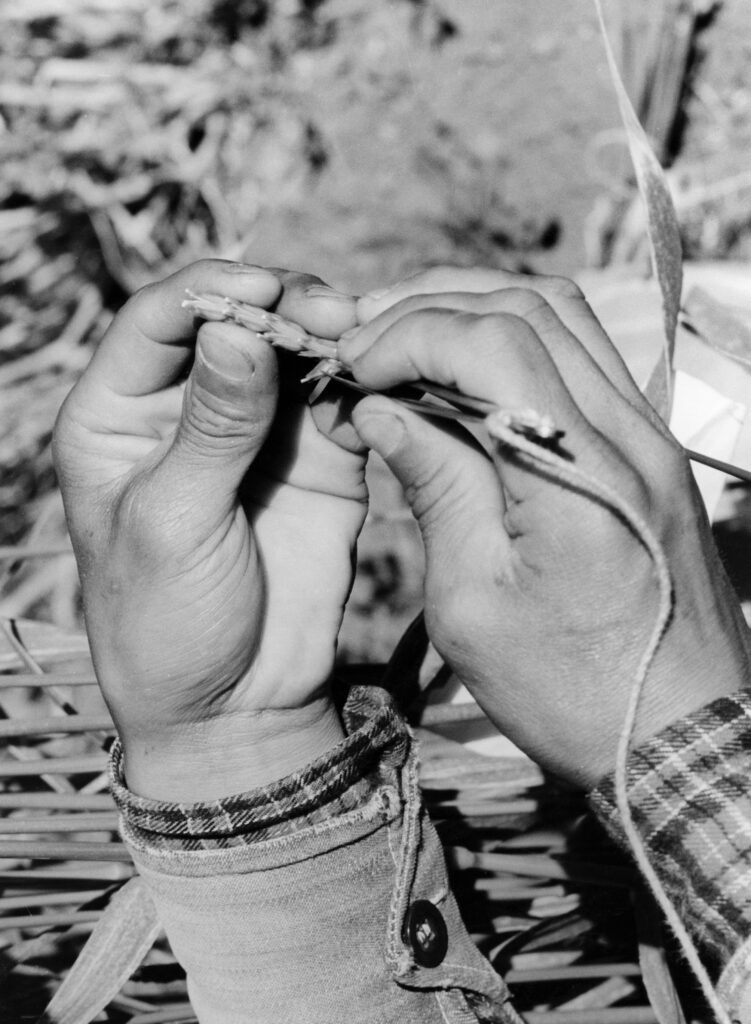
The MAP wheat program made three key discoveries. First, enhancing soil, particularly through nitrogen supplementation, increased wheat yield even with ongoing stem rust problems. Second, to make new hybrid crosses, in 1945 Borlaug began “shuttle-breeding,” or moving seed from Chapingo, with its early growing season, to Sonora, which had a later growing season. Shuttle breeding cut development time in half and fostered varieties that could thrive across a variety of conditions. Finally, Borlaug began working with “Norin” dwarf wheat imported from the U.S., a short straw variety that was both rust-resistant and higher yielding. When it was incorporated into the elaborate crosses already developed, wheat production rose dramatically. Mexico became self-sufficient in wheat production by 1956, and in MAP’s first twenty years, Mexico tripled its wheat production.
Building Educational Resources
One of the Mexican Agriculture Program’s key strategies involved making up-to-date agricultural information available to all farmers. In 1945, the Rockefeller Foundation hired Dr. Dorothy Parker to oversee the formation of a modern research library at San Jacinto. The library drew researchers from across Latin America.
Training Indigenous Experts
MAP utilized its experimentation stations to educate generations of indigenous Mexican agronomists, creating a new class of technocratic experts who could eventually assume leadership of the program. The stations provided both hands-on field experience and interaction with highly trained U.S. scientists. Before the RF’s arrival, Mexican agronomists had been largely book-educated and separated from manual field labor. RF scientists brought to Mexico habits learned in U.S. land grant colleges, where fieldwork and academic research were integrated. In MAP’s first twenty years, over 550 graduates of Mexican agricultural colleges served as apprentices and interns in the OSS.
The RF then supported more than half of these interns with fellowships to pursue advanced degrees in U.S. universities. Thus Mexicans were incorporated into a growing network of research scientists who were establishing international connections in agriculture. These newly minted Mexican agronomists formed a core staff who could take over the RF’s program and who could expand the extension system that had been nearly non-existent in 1941.
Based on the success of the Mexican venture, the Foundation launched similar official programs in Colombia in 1950 and Chile in 1955 and provided advisory services to governmental agriculture ministries in both Ecuador and Peru.
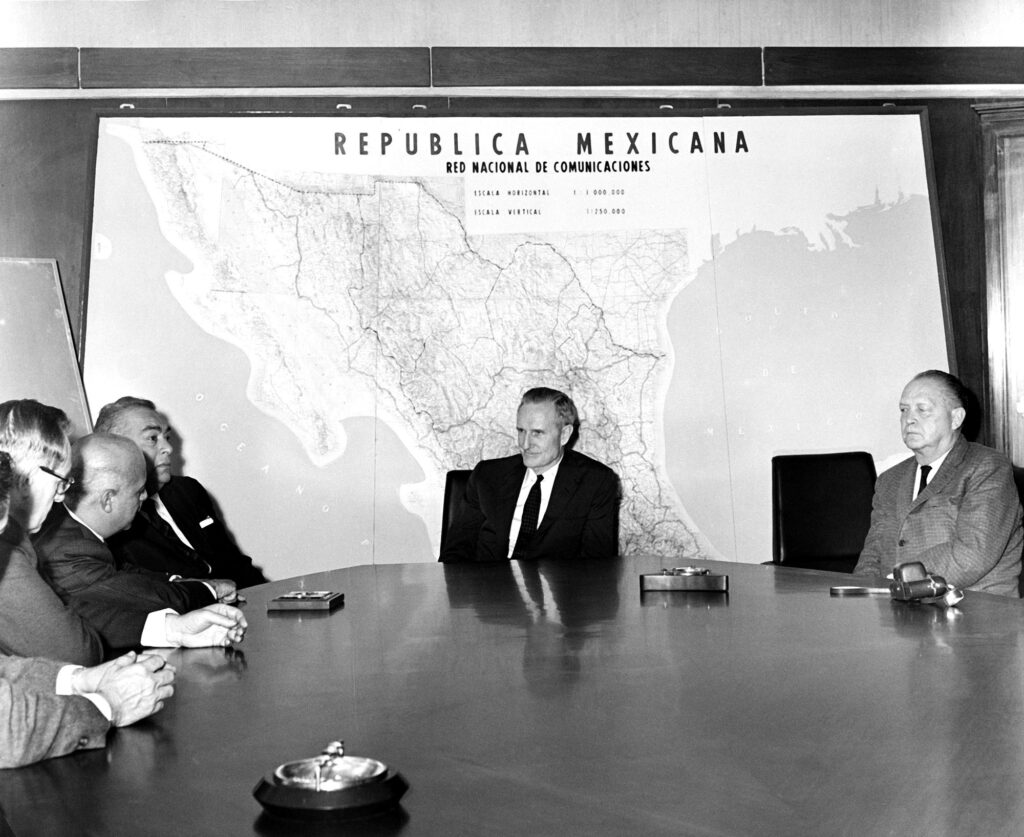
Research This Topic in the Archives
Explore this topic by viewing records, many of which are digitized, through our online archival discovery system.
- “Agriculture,” 1938, 1941-1947. Rockefeller Foundation records, Projects (Grants), Record Group 1, Subgroup 1.1, Latin America, Series 300, Natural Sciences and Agriculture, Subseries 300.D, Rockefeller Archive Center.
- “Agr – 6 – 16,” 1923-1974. Rockefeller Foundation records, Projects (Grants), Record Group 1, Subgroup 1.2, Mexico, Series 323, General (No Program), Subseries 323.GEN, Rockefeller Archive Center.
- “Agriculture – Agreements,” 1936, 1941-1943. Rockefeller Foundation records, Projects (Grants), Record Group 1, Subgroup 1.2, Mexico, Series 323, General (No Program), Subseries 323.GEN, Rockefeller Archive Center.
- “Program and Policy – Agriculture,” 1927-1955. Rockefeller Foundation records, Administration, Program and Policy, Record Group 3, Subgroup 3.1, Natural Sciences and Agriculture, Series 915, Rockefeller Archive Center.
- “Agriculture – La Rinconda Experiment Station – Maipu and Santiago,” circa 1905-1980. Rockefeller Foundation records, Photographs, Chile, Series 309, Rockefeller Archive Center.
- “Agriculture – Temuco Experiment Station,” circa 1905-1980. Rockefeller Foundation records, Photographs, Chile, Series 309, Rockefeller Archive Center.
- “Agriculture – Cobb, William C. – Trip Photos,” circa 1905-1980. Rockefeller Foundation records, Photographs, Colombia, Series 311, Rockefeller Archive Center.
- “Agriculture – Crops – Potato,” circa 1905-1980. Rockefeller Foundation records, Photographs, Mexico, Series 323, Rockefeller Archive Center.
- “Agriculture – Experiment Stations – Chapingo – Beans,” circa 1905-1980. Rockefeller Foundation records, Photographs, Mexico, Series 323, Rockefeller Archive Center.
- “Agriculture – Experiment Stations – Chapingo – Field Day,” 1946. Rockefeller Foundation records, Photographs, Mexico, Series 323, Rockefeller Archive Center.
- “Agrarian University – Rojas,” circa 1905-1980. Rockefeller Foundation records, Photographs, Peru, Series 331, Rockefeller Archive Center.
The Rockefeller Archive Center originally published this content in 2013 as part of an online exhibit called 100 Years: The Rockefeller Foundation (later retitled The Rockefeller Foundation. A Digital History). It was migrated to its current home on RE:source in 2022.
